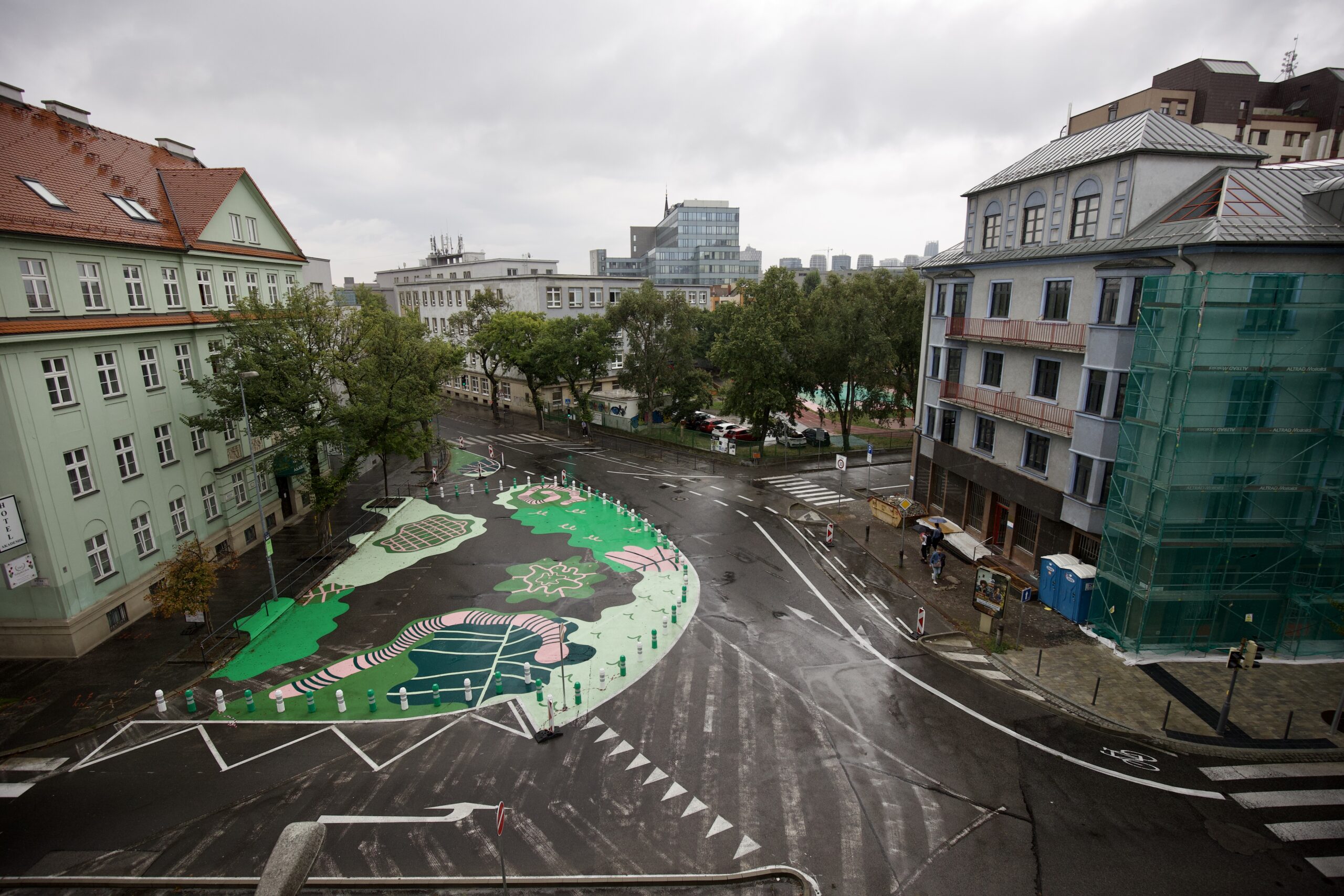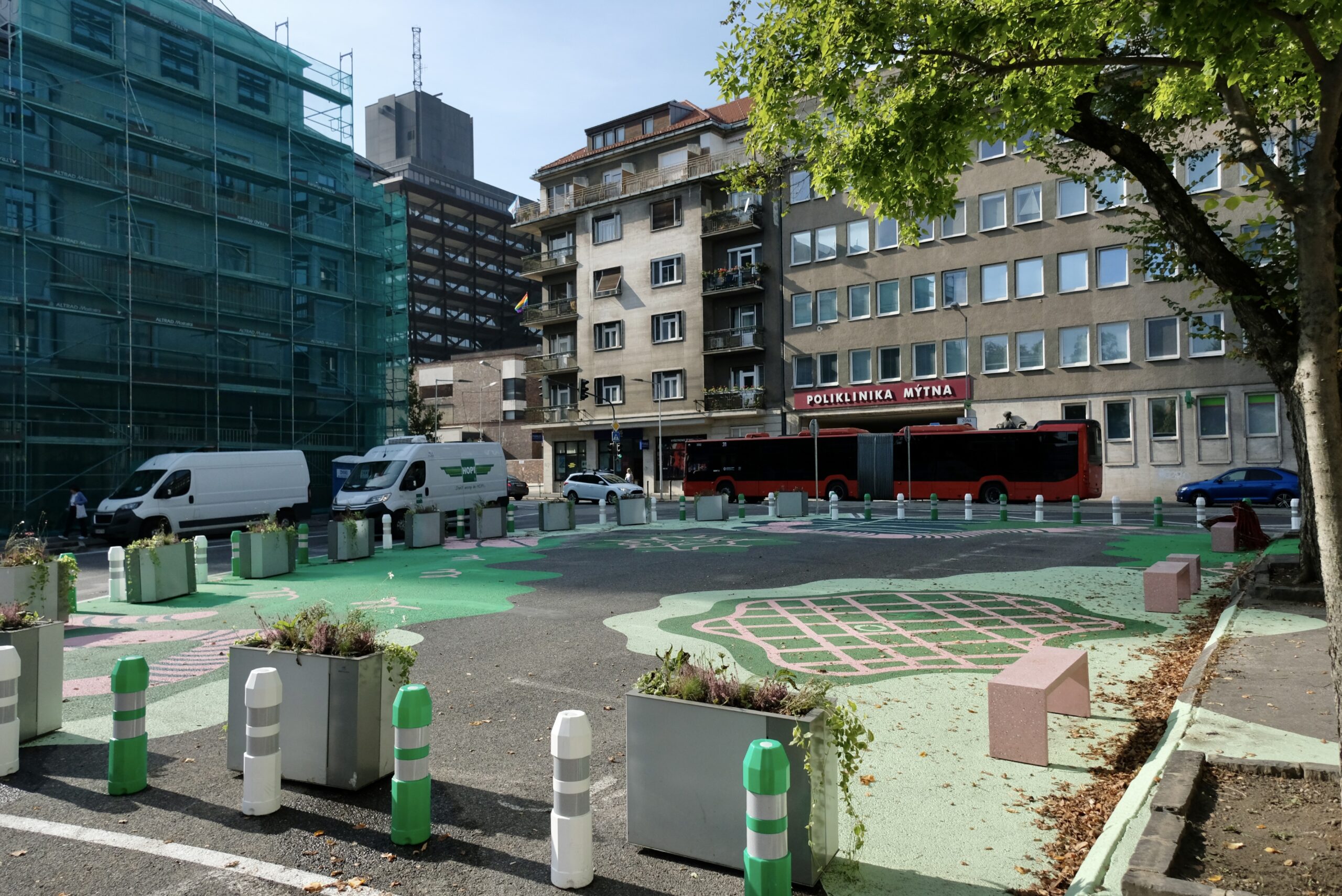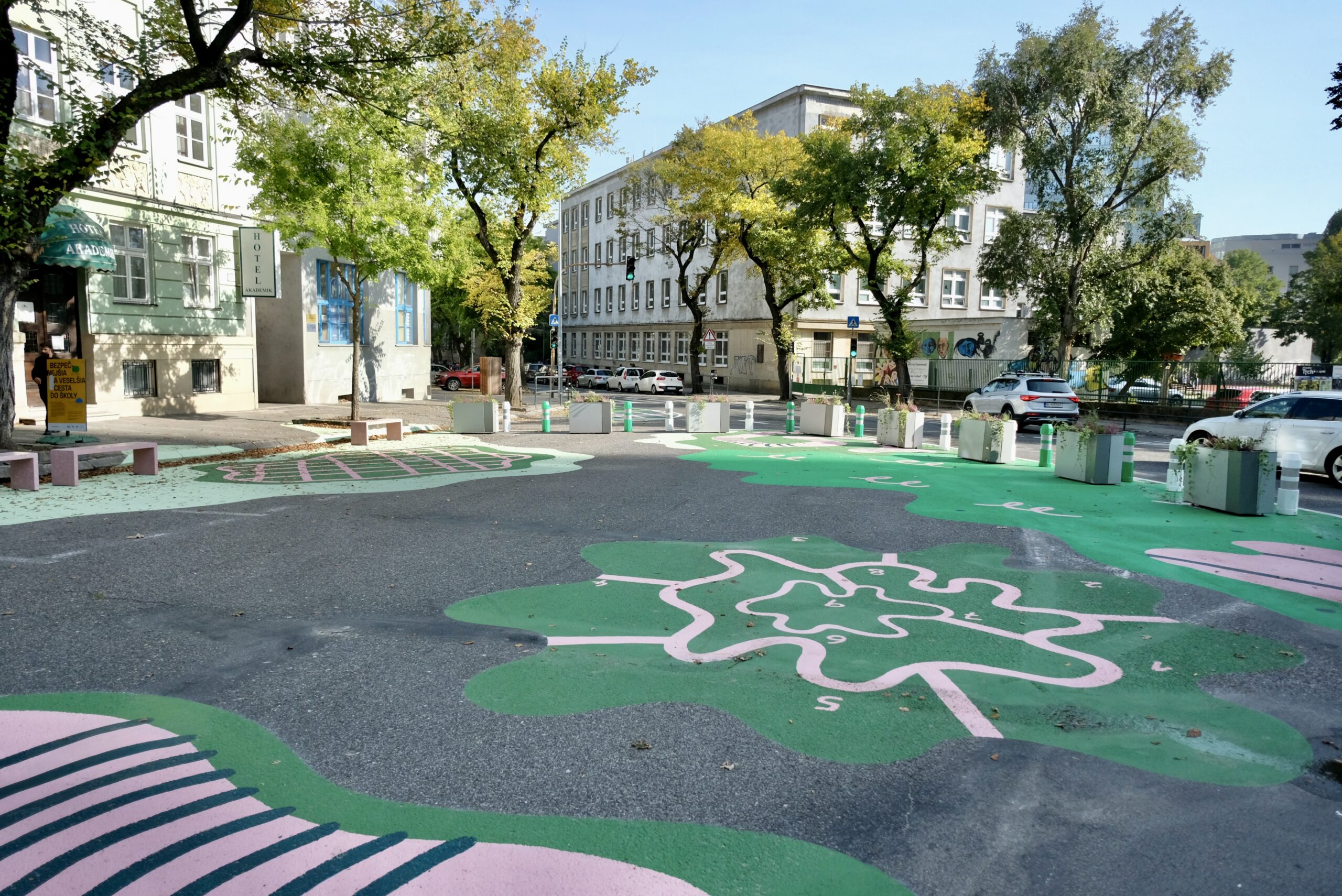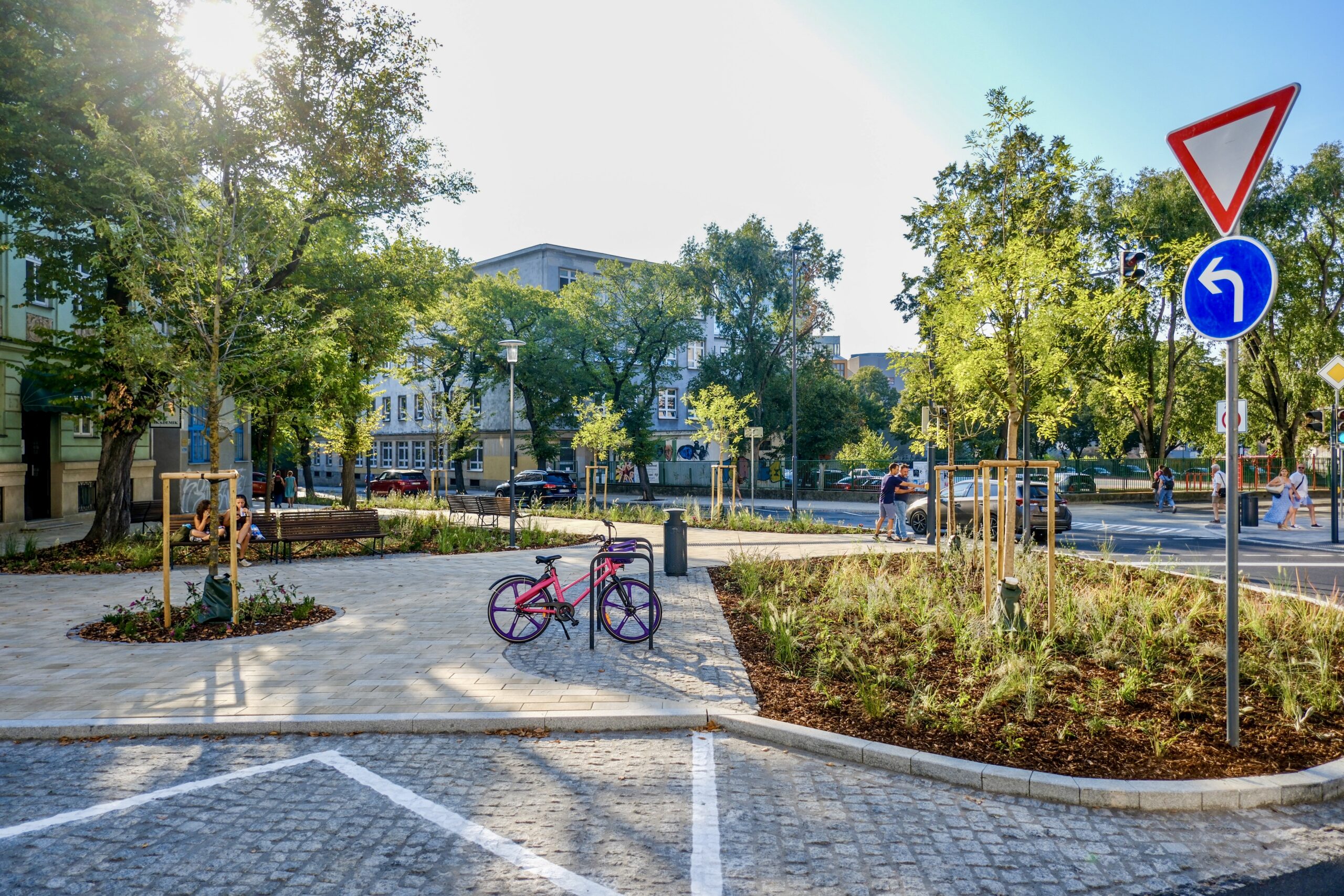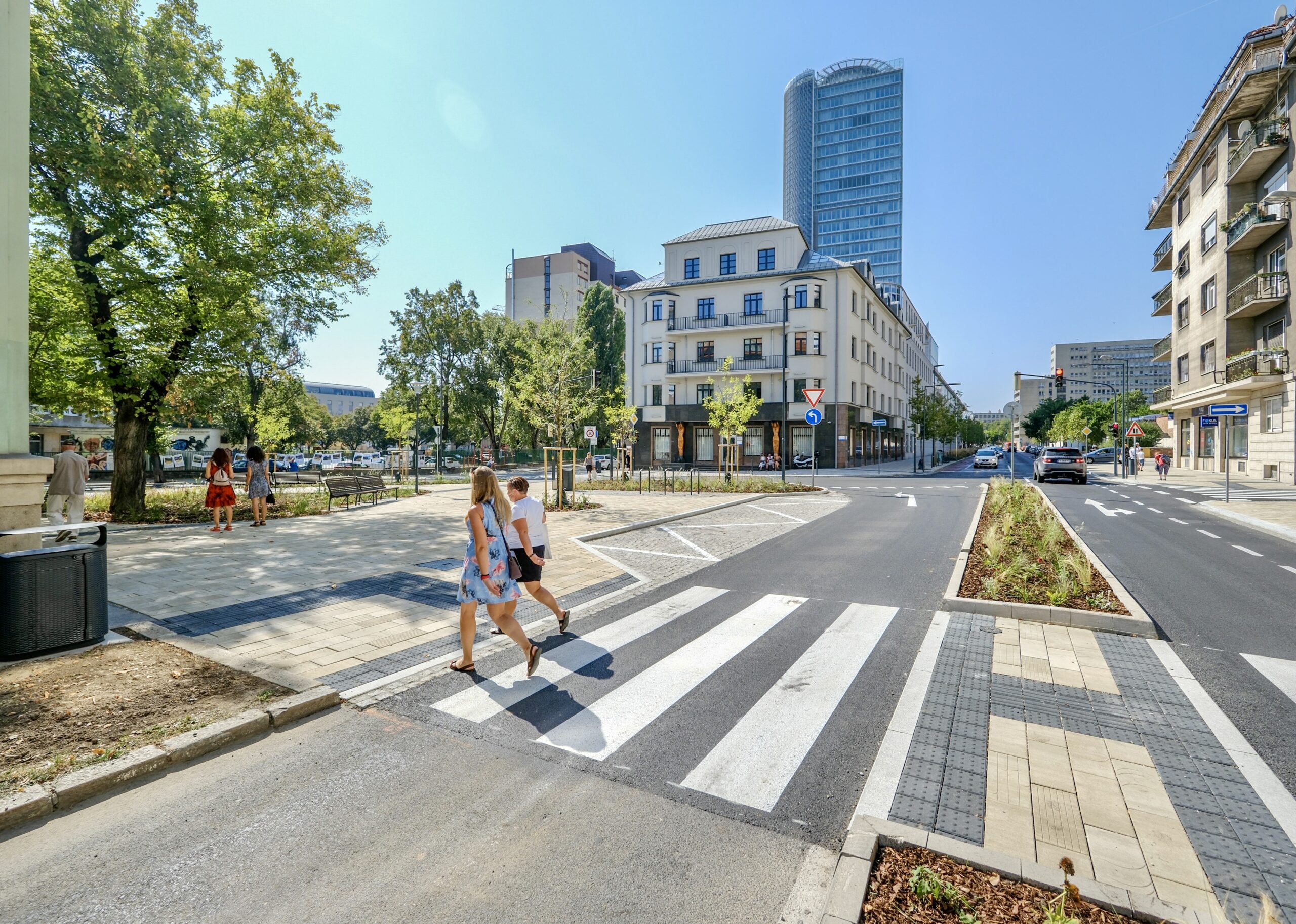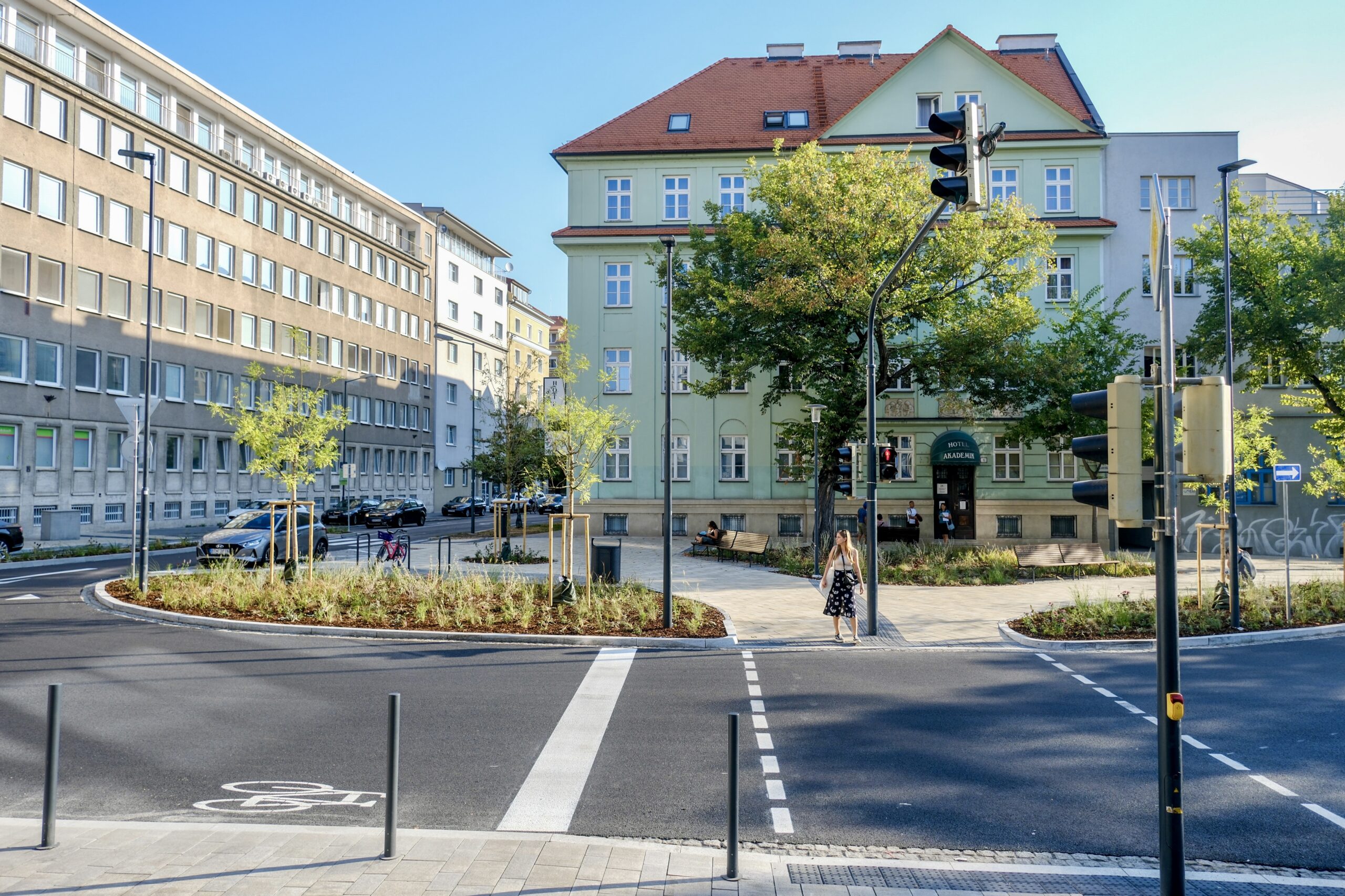City for Children: Bratislava Transforms Dangerous School Junction Reclaiming Public Space
A formerly chaotic and unsafe intersection near Vazovova School in Bratislava has undergone a thoughtful transformation. Once viewed as dangerous by two-thirds of surveyed parents, the area is now safer, greener, and more inviting — thanks to a redesign process shaped by the needs of its youngest users.
The Vazovova School, attended by 624 primary and 680 secondary pupils, sits near a busy junction in the city center. Until recently, the intersection lacked safe pedestrian crossings, had poor visibility, and was dominated by a vast asphalt surface that encouraged speeding cars and contributed to excessive summer heat.
The redesign is part of the City for Children initiative by the Metropolitan Institute of Bratislava (MIB), which was founded in 2019 under Mayor Matúš Vallo as a strategic hub for urban planning, public spaces and participation. The City for Children program focuses on making public spaces safer and more accessible for children — and by extension, for everyone.
Identifying Issues and Engaging the Community
To understand the challenges at Vazovova, MIB conducted socio-spatial analyses and engaged over 500 community members. Their feedback directly informed the project’s early design concepts. Discussions, surveys, and perceptive walks — where participants could navigate the streets from the perspective of someone with mobility limitations (using crutches, a wheelchair, a stroller, or as a three-year-old child) — helped shine light on the key challenges. Workshops and Play streets with temporary road closures engaged children, teachers and parents through participatory actions into discussions how the immediate school neighbourhood could transform.
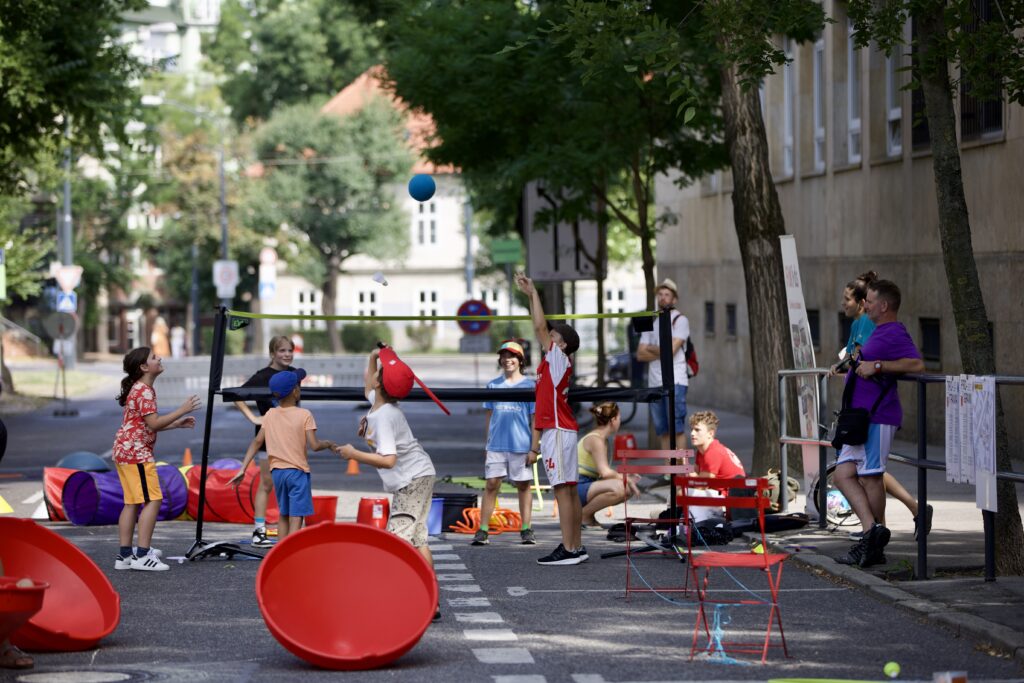
Testing Ideas Through Tactical Urbanism
In spring 2023, based on collected feedback and data, MIB collaborated with a traffic expert to develop a plan for reorganizing traffic in the area. Simulating traffic behavior on this scale is often unreliable, as it does not always account for real behavioral change post-implementation. This was why the team decided to test the interventions through tactical urbanism.
During the City for Children program’s expansion, MIB worked with Bloomberg Associates and Janette Sadik-Khan, former New York City Transportation Commissioner, who used tactical urbanism as a key tool in transforming NYC streets.
The goal of the temporary interventions was to visually highlight changes in traffic organization, restricting vehicle access to certain areas. Nine illegal parking spots were removed, and car access was reduced by narrowing the junction and converting road space into pedestrian zones. Half the asphalt surface was reclaimed for walking, gathering, and greenery. These visual and physical cues helped shift driver behavior and made the area immediately safer, paving the way for permanent implementation.
Permanent Changes for a Safer, Cooler, and More Welcoming Space
The final redesign—completed in consultation with traffic engineers—introduced a range of permanent safety and placemaking elements:
- New pedestrian crossings
- Raised entry areas to slow down traffic (continuous sidewalks)
- Green islands and drop-off zones for short stops
- Designated parking spots for parents accompanying their children
By narrowing the intersection, approximately 500 square meters of public space were reclaimed and transformed into a welcoming green area. The goal was to plant greenery that would gradually shade the intersection, providing cooling benefits in summer and water retention year-round. In addition to greenery, new urban furniture was installed — benches, waste bins, and bike racks reflecting that 79% of parents expressed the need for safe bicycle parking. The original asphalt surface was replaced in key areas with Bratislava’s signature city pavement, featuring a unique urban design. Stone curbs and barrier-free pedestrian crossings were also implemented.
The school and its surroundings have gained much-needed public space for social interaction and relaxation. The behavioral change was immediate, with residents and students making use of the new urban furniture from day one.
A Scalable Model for Child-Friendly Cities
The transformation of the Vazovova intersection is the first phase of a broader transformation of the area. And it’s not just about physical change, but also about building an engaged new generation with a strong relationship to place – which is why participation through various activities like play streets, workshops or perceptive walks is a big part of the programme.
The City for Children program continues to be scaled across all city districts. MIB and the City of Bratislava are now planning similar interventions at 20 more schools between 2025 and 2026, aiming to improve the urban environment for over 15,000 pupils. The project exemplifies how small-scale, participatory design can lead to lasting change in how we move through and relate to public space — especially when we design it from a child’s point of view.










